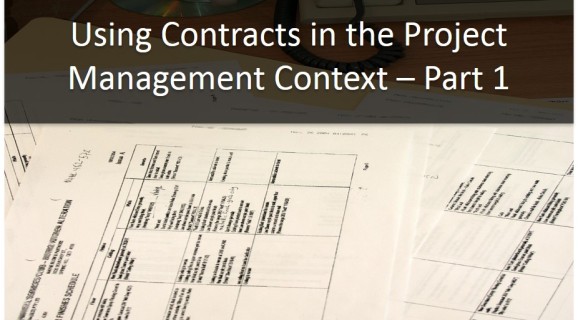
Getting contract basics right first time
Back in 1997, the Canadian government contracted Electronic Data Systems to produce a Canadian national firearms registration system. Originally specified to cost a net $2 million, a change of government and pressure from lobbyists created more than 1,000 changes to the original agreement. By 2001, with all changes accepted, the system had cost a total of nearly $700 million. On top of this, annual running costs were estimated at $140 million.
This one foul-up is a billion dollar lesson in the need for the project manager (in this case the government) to concentrate on getting the contract right before signing off.
Why the project manager uses contracts
Within the project management context, the project manager will use contracts when buying from external companies and third parties. This is true of both goods and services provided during the lifetime of the project, and is no less relevant whether the project is small or large and complex.
A contract in its simplest form is an agreement between two people to either do or not do something specific. This makes the conditions enforceable through a court of law. In the project management context, a contract is generally used to form a reference for the exchange of goods or services for money. There may be a number of conditions included (concerning details such as timings and quality, for example).
In this first part of two, I’ll be taking a brief look at the three main types of contract used by the project manager.
The fixed price contract
When using a fixed price contract, the project manager will agree a specific price for a set service or good. The deliverables should be well-defined, and it is the seller who takes the biggest risk: they must ensure that potential cost increases are accounted for as well as delays in the production of the goods to be delivered, or risk their profit.
The project manager has the responsibility to ensure that the details of the contract are specific and meaningful – if they aren’t, there could be expensive change requests needed as the contract progresses (as the Canadian government found out to its cost and embarrassment).
It is also possible to use a derivation of the fixed price contract that includes an incentive or bonus (perhaps for paying more for early completion).
The cost reimbursable contract
This is more flexible than the fixed price contract, and changes can be made more easily. However, it can reduce the incentive for the seller to work efficiently, and is best used where there is a lot of ambiguity over the final deliverables. Typically this type of contract falls into one of three sub-types:
- Cost plus fee or percentage of cost
- Cost plus fixed fee
- Cost plus incentive fee
Depending on how the contract is structured, the seller may be incentivised on performance.
The time and materials contract
The project manager agrees to pay the cost of work carried out – paying for the time of the provider’s employees, contractors, and sub-contractors – and the materials used.
A clear disadvantage is the lack of an upper limit on cost, and for this reason this type of contract is less common than the two above. However, it is used more commonly where a fixed price contractor has abandoned the work and a new contractor is required.
One way that the project manager can overcome the potential cost disadvantage is by insisting on a guaranteed maximum price. Such a guarantee gives the project manager cost certainty, while allowing the possibility of paying a lower amount.
Next time, I’ll round off the basics of contracts when I look at:
- Managing contractor contracts
- Turnkey contracts
- Build Own Operate Transfer contracts
- Alliance contracts
In the meantime, if you would like us to answer your queries, or have a specific question to ask, please feel free to click on the ‘Contact Us’ button below.

